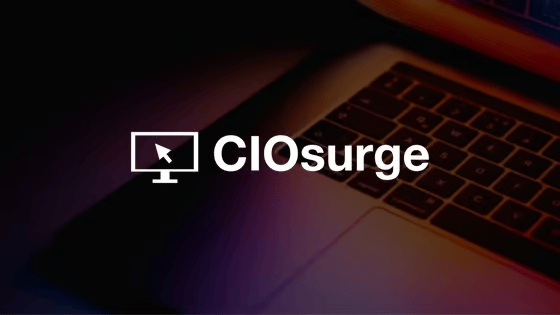- CIOsurge
- Posts
- 💰 Kubernetes overprovisioning drives cloud cost inefficiencies
💰 Kubernetes overprovisioning drives cloud cost inefficiencies
Kubernetes Cost Pitfalls, Enterprise Architecture as Strategy, New CIOs at Books-A-Million and Academy Sports


Powered by Single Fin
Welcome to this week’s edition of CIOsurge!
This week:
Kubernetes overprovisioning is driving cloud cost inefficiencies, with enterprises using just a fraction of allocated resources.
Enterprise Architecture is shifting from governance to a strategic advantage, aligning IT with business goals.
Books-A-Million and Academy Sports appoint new CIOs to lead digital transformation and IT strategy.
Let’s make this week a game-changer.
Stay sharp. Stay ahead.
💰 Kubernetes overprovisioning drives cloud cost inefficiencies
A Cast AI report found that most enterprises significantly overprovisioned Kubernetes resources in 2024, with cloud CPU utilization averaging just 10% and memory use below 25%. This inefficiency resulted in unnecessary cloud spend, compounded by AI workloads. While discount programs offer savings, overprovisioning remains the default strategy due to fear of service disruptions, driving up costs unnecessarily.
Cloud cost control isn’t just about negotiating better rates—it's about operational discipline. The data from Cast AI underscores a fundamental issue: many enterprises are paying for far more compute than they actually need. IT leaders must rethink how we allocate cloud resources, leveraging automation and real-time adjustments rather than static provisioning models.
With AI workloads escalating demand, the old model of overprovisioning is unsustainable. Kubernetes clusters should be optimized dynamically, mixing spot instances and right-sizing deployments. If you don’t have a cloud cost strategy beyond vendor incentives, you're likely throwing money away—money that could be invested elsewhere in innovation and resilience.
- Zack Tembi
🏗️ Enterprise Architecture as a Competitive Advantage
Enterprise Architecture (EA) is evolving beyond governance into a strategic force that drives business transformation. A structured EA approach—moving from foundational stability to operational efficiency and, finally, strategic influence—enables IT leaders to optimize costs, accelerate digital initiatives, and align technology with business goals. Organizations that embrace EA as a business enabler, rather than a static IT function, gain a competitive edge.
We’ve all seen EA initiatives bogged down in documentation and governance rather than driving real business impact. The challenge isn’t whether EA should be strategic—it’s whether IT leaders are structuring their teams and frameworks to make that happen. Without a phased approach that delivers tangible value at each step, EA risks becoming another bureaucratic function rather than a key driver of transformation.
If EA isn’t embedded in decision-making at the highest levels, IT investments won’t align with business objectives, and transformation efforts will stall. CIOs should push for EA to play a proactive role—informing executive decisions, shaping technology roadmaps, and enabling agility. The difference between a company that merely ‘does EA’ and one that leverages it strategically is night and day.
- Zack Tembi
💬 Zack's Take

🚀 Build vs. Buy: When DIY Becomes a Drain
A lot of companies believe they can build their own solutions to save money or customize features exactly to their needs. In theory, it sounds like a smart move. But in practice, what often happens is that teams end up sinking more time into maintaining those systems than actually solving the problem they set out to fix. Internal builds start with good intentions, but without long-term planning, they quickly turn into resource-draining technical debt.
What begins as a simple in-house project can spiral into a full-time maintenance nightmare. Patches, updates, compatibility issues—suddenly, engineers are spending more time firefighting and keeping internal tools running than driving innovation. Instead of streamlining operations, these homegrown systems create hidden costs in lost productivity and opportunity. Worse, internal solutions often lag behind industry best practices, leaving companies with outdated tech that requires even more effort to modernize later.
Buying a solution that’s already built allows teams to focus on what really matters: solving business problems, not maintaining infrastructure. The right vendor solution doesn’t just save time—it brings expertise, scalability, and ongoing support that internal teams struggle to match. Smart companies evaluate whether a problem is truly core to their business before committing to a custom build. If it’s not, the smarter investment is almost always in a solution that lets your team focus on driving value rather than reinventing the wheel.
🗞️ At A Glance

💡 CIO Spotlights
Books-A-Million taps Brandon Waters as CIO to drive tech innovation
Brandon Waters, newly appointed CIO of Books-A-Million, will lead the company’s tech strategy, focusing on AI and digital transformation.
Waters, who rejoined BAM! in 2024, has driven key digital initiatives in finance, supply chain, and merchandising.
CEO Terrance Finley praises Waters' strategic vision and rapid impact in modernizing IT operations.
Academy Sports appoints Sumit Anand as CIO amid business challenges
Sumit Anand joins Academy Sports as EVP and CIO, overseeing enterprise tech, cybersecurity, and IT operations.
He previously held leadership roles at At Home and Signet Jewelers, bringing strategic and IT transformation experience.
His appointment follows a tough fiscal period, with Academy Sports narrowing its 2024 guidance after sales declines.





Reply